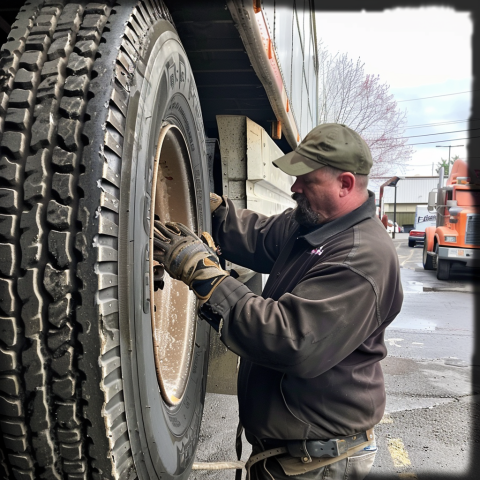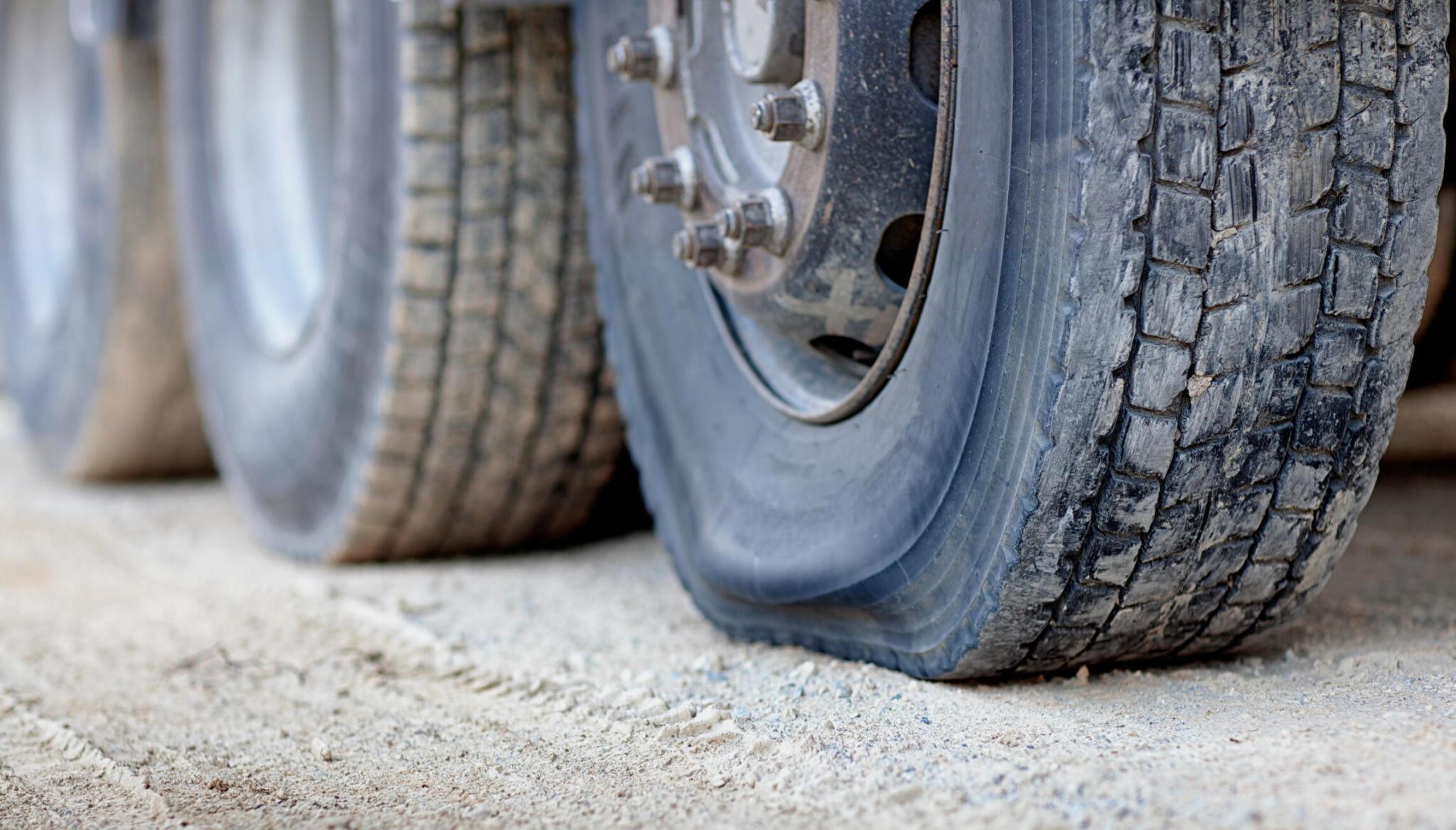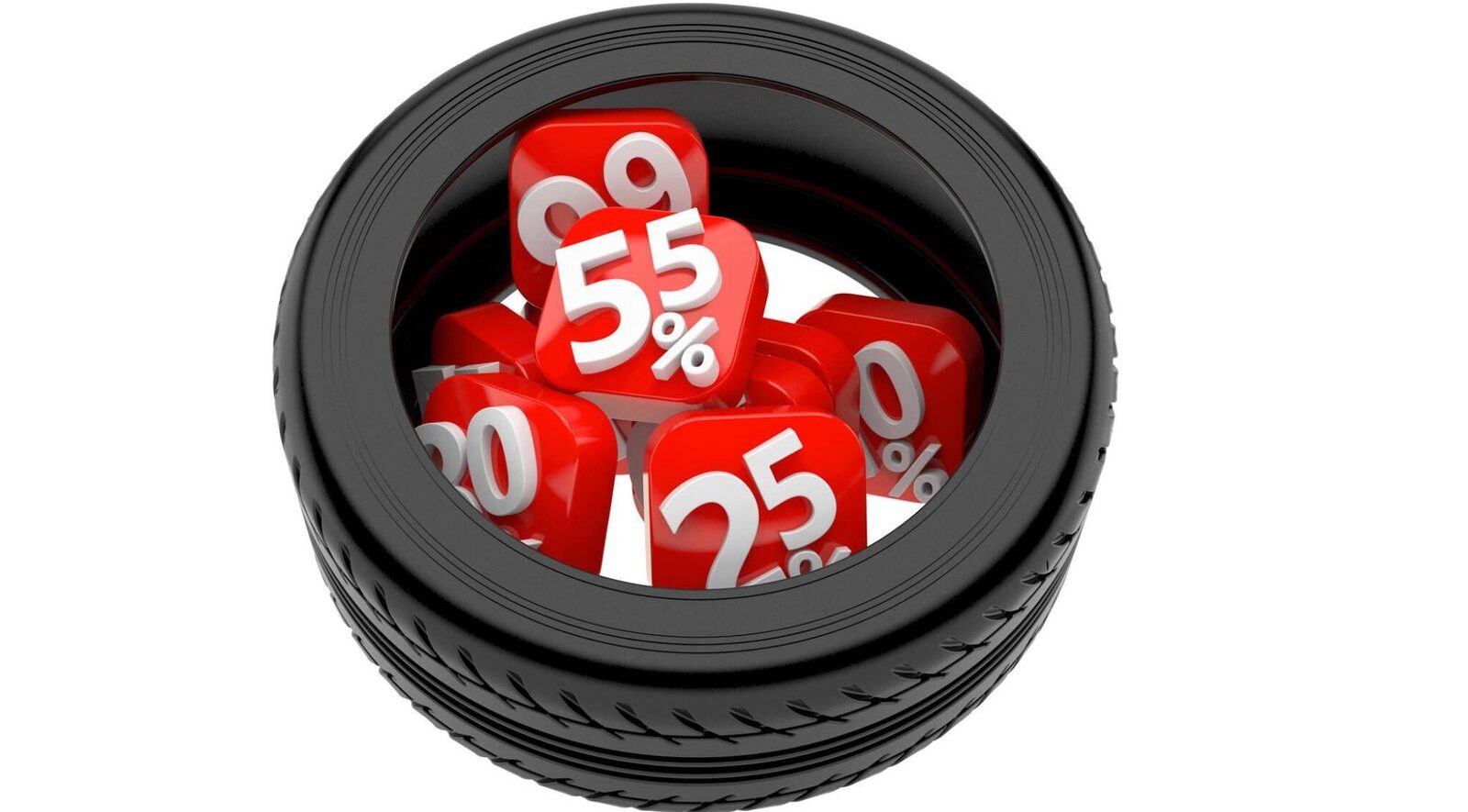Last Updated on April 21, 2024
Maintaining Safe Journeys By Tire Replacement
The quality of a vehicle’s tires considerably impacts its longevity and performance. They are the only parts of the car that come into contact with the road, so they are critical to safety, handling, and fuel efficiency. Proper tire maintenance and replacement ensures a safe and efficient driving experience.
Overview of Tire Maintenance
Tire care includes a variety of techniques designed to increase the life of tires and keep them safe to use. Essential parts of tire maintenance are:
- Regular Inspection: Regular inspections look for wear, damage, or aging symptoms. They also search for cracks, bulges, and embedded items in the Tire.
- Tire Pressure Monitoring: Maintaining tire inflation to the manufacturer’s specified levels. Both underinflation and overinflation can cause premature wear and safety hazards.
- Rotation and Balancing: Rotating your tires regularly every 5,000 to 8,000 miles) helps to ensure wear. Balancing tires ensures that they wear evenly and last longer.
- Alignment checks: Misalignment might lead to unequal tire wear. Regular alignment checks are essential, particularly after hitting a pothole or curb.
Maintaining tires increases their lifespan and improves the vehicle’s overall performance. Properly maintained tires improve traction, handling, and fuel efficiency.

Importance of Regular Tire Replacement
The importance of regular tire replacement cannot be overstated. Key reasons include:
- Safety: Worn tires greatly diminish a vehicle’s safety. They cause lower traction, particularly in rainy circumstances, raising the danger of an accident.
- Performance: Old or worn tires impact the vehicle’s handling and braking efficiency. This can result in greater stopping distances and limited mobility.
- Legal and Insurance Implications: Driving with tires that are less than the legal tread depth can result in fines and may invalidate car insurance.
- Fuel Efficiency: Worn tires can lower fuel efficiency, increasing fuel expenditures.
The typical recommendation for tire replacement is when the tread depth reaches 2/32 inches. However, replacing tires sooner can improve safety in certain situations, such as wet or icy conditions.
Regular tire maintenance and replacement are crucial to a vehicle’s safety, performance, and efficiency. Drivers can make their journeys as safe and efficient as possible by following standard maintenance schedules and recognizing the indicators of tire deterioration.
Understanding Tire Wear and Tear
Tire wear and tear is an inevitable aspect of driving, but understanding it can help you maximize the longevity of your tires and maintain vehicle safety. Various factors contribute to tire wear, and awareness of these can lead to more informed decisions about tire care and replacement.
Factors Affecting Tire Longevity
Several factors can influence how long your tires last:
- Driving Habits: Aggressive driving, such as quick acceleration, hard braking, and high-speed turning, reduces tire life. Smooth, consistent driving behaviors may assist in extending tire life.
- Road Conditions: Frequent driving on rocky or uneven terrain accelerates tire wear. Potholes, sharp objects, and curbs can cause rapid tire damage and uneven wear.
- Tire Pressure: Incorrect tire pressure significantly affects tire wear. Both overinflation and underinflation can cause uneven wear and shorter tire life.
- Poor alignment, suspension issues, and imbalanced tires can all cause uneven tire wear. Regular car maintenance is vital for even tire wear.
- Load and Weight: Consistently driving with heavy loads or towing can create tire stress, leading to accelerated wear.
- Climate and Environmental Conditions: Extreme temperatures, sunlight, and environmental factors such as oil, grease, and chemicals can all degrade rubber over time.
Signs of Tire Wear
Regularly checking your tires for signs of wear and tear can help you determine when they need to be replaced. Key indicators include:
- Tread Depth: The most frequent way to assess tire wear is to measure the tread depth. A tread depth 2/32 of an inch or less indicates it is time for replacement tires.
- Wear patterns: Uneven patterns, such as increased wear on the inside or outer edges, may suggest alignment difficulties. Cupping or scalloping may indicate suspension problems. Check the sidewalls for any cracks, cuts, or bulges. These can signal structural issues, which can result in tire failure.
- Vibration or Noise: Excessive driving vibration or noise may indicate irregular tire wear or internal damage.
- Tire Age: Tire rubber deteriorates over time, even with a suitable tread depth. Most manufacturers recommend replacing tires every 6–10 years, regardless of wear depth.
Understanding the elements contributing to tire wear and tear and recognizing the indicators of worn tires is critical for keeping your car safe and performing. Regular inspections and swiftly correcting concerns can help extend the life of your tires and provide a smoother, safer driving experience.
Industry Standards for Tire Replacement
Industry standards and guidelines govern vehicle tire replacement to maintain safety and performance. These guidelines are based on manufacturer recommendations and legal requirements and provide a foundation for determining when and how to change tires.
Manufacturer Recommendations
Vehicle and tire manufacturers have particular recommendations for tire replacement, which may differ depending on the tire type and vehicle model. These recommendations usually include the following:
- Mileage Guidelines: Manufacturers often suggest a general mileage range, after which tires should be inspected and replaced. While this can vary, a standard recommendation is to consider tire replacement every 25,000 to 50,000 miles.
- Age of the Tires: Most manufacturers recommend replacing tires every 6-10 years, regardless of tread depth. This is because tire materials deteriorate over time, leading to reduced performance and increased risk of tire failure.
- Tread Depth Indicators: Tires often have tread wear indicators—raised sections in the tire grooves. It’s time to replace the tires when the tread wears down to these indicators (usually at 2/32 of an inch).
- Type-Specific Advice: Different types of tires (e.g., all-season, performance, winter) may have specific replacement guidelines based on their unique wear characteristics.
Legal Requirements and Safety Standards
In addition to manufacturer recommendations, there are legal requirements and safety standards that dictate when tires should be replaced:
- Minimum Tread Depth: Most regions have legislated restrictions for minimum tread depth. In many areas, the legal minimum is 2/32 of an inch, and driving with tires under this size can result in fines and penalties.
- Inspection Regulations: Some areas mandate frequent vehicle inspections, including tire checks. Failure to perform these checks due to worn tires may result in obligatory replacements.
- Safety Certifications: Tires must be roadworthy to comply with particular safety regulations and certifications. These certifications ensure that tires can withstand a variety of circumstances without endangering the driver.
- Recalls and Advisory: Manufacturers may issue recalls or advisories for individual tire models. These should be taken seriously, as they frequently refer to safety risks that may demand rapid repair.
Adherence to industry standards for tire replacement is critical for vehicle safety and performance. Drivers should get familiar with the manufacturer’s recommendations for their specific tires and the regulatory requirements in their area. Regular inspections and attention to these standards can considerably minimize the probability of tire-related incidents, resulting in a safer driving experience.
Assessing Your Tires’ Condition
Regular tire inspections maintain your vehicle’s safety and best performance. Understanding how to evaluate tire tread depth, recognize uneven wear patterns, and detect tire damage and flaws will allow you to make more informed tire maintenance and replacement decisions.
How to Check Tire Tread Depth
Tire tread depth is a critical indicator of a tire’s health and ability to perform safely. Here’s how you can check it:
- Use a Tread Depth Gauge: This simple tool offers the most accurate measurement. Insert the probe into the tread groove, press the shoulders of the gauge flat against the tread, and read the result.
- The Penny Test: A penny can be used for a quick check without a gauge. Insert a penny into the tread groove with Lincoln’s head facing down. If the top of Lincoln’s head is visible, the tread is below 2/32 of an inch, and the Tire needs replacing.
- Built-In Wear Indicators: Most tires have tread wear indicators — raised sections at the bottom of the tread grooves. When the tread is flush with these indicators, it’s time for a replacement.
Recognizing Uneven Wear Patterns
Uneven wear patterns can indicate issues with alignment, inflation, or suspension. Types of uneven wear include:
- Center Wear: It is usually caused by overinflation. The Tire’s center wears out faster than the edges.
- Edge Wear: It is often a result of underinflation. The Tire’s edges wear out quicker than the center.
- Cupping or Scalloping: This can indicate problems with the suspension system. It appears as dips or scallops around the Tire’s surface.
- Feathering: Tires have a smooth texture on one side and a sharp texture on the other, often caused by improper alignment.
Identifying Tire Damage and Defects
Regularly inspect your tires for any signs of damage or defects, including:
- Cuts and Cracks: Look for cuts in the sidewall or tread, which can weaken the tire structure.
- Bulges and Blisters can indicate that the Tire’s internal frame is damaged, leading to a weak spot.
- Vibration or Unusual Noises: These symptoms can suggest internal tire damage or a tire is out of balance.
- Punctures: Small punctures can sometimes be repaired, but larger punctures often mean the Tire needs to be replaced.
Regularly assessing your tires’ condition is an essential aspect of vehicle maintenance. You can ensure your vehicle’s tires are in safe working order by understanding how to effectively check the tread depth, recognize wear patterns, and identify damage or defects. This proactive approach not only enhances your safety on the road but can also extend the lifespan of your tires, saving money in the long run.
Factors Influencing Tire Life
The lifespan of a tire is not just determined by its design and construction but is significantly influenced by external factors such as driving habits, environmental conditions, and vehicle type. Understanding these factors can help drivers make informed decisions to prolong tire life.

Driving Habits and Conditions
The way you drive a vehicle and the conditions it is gone in play a crucial role in tire longevity:
- Aggressive Driving: Habits like rapid acceleration, hard braking, and fast cornering put extra stress on tires, leading to faster wear. Smooth, gradual maneuvers are more tire-friendly.
- Speed: High-speed driving can generate excessive heat, accelerating tire wear.
- Road Surface: Rough, uneven, or gravel roads can cause quicker tire degradation than smooth, paved roads.
- Load: Consistently carrying heavy loads or towing increases tire pressure and hastens wear.
- Frequency of Use: Frequent short trips, especially in urban settings with lots of stopping and starting, can wear tires out faster than longer, steady drives.
Climate and Environmental Impact
Environmental factors are also crucial in determining tire wear:
- Temperature: Extreme hot and cold temperatures can affect tire longevity. Heat accelerates tire aging and tread wear, while cold can make tires more brittle and prone to damage.
- Sun Exposure: Prolonged exposure to sunlight and UV rays can degrade tire rubber compounds, leading to faster aging.
- Road Chemicals: Salt used on roads during winter and other chemicals can corrode tires over time.
Vehicle Type and Tire Compatibility
The relationship between the vehicle and its tires also affects tire lifespan:
- Vehicle Type: Different vehicles distribute weight differently and have varying power outputs, which affects tire wear. Front-wheel-drive cars, for example, may wear out front tires more quickly due to the increased stress of steering and propulsion.
- Tire Type: Choosing the right Tire for your vehicle and driving needs is critical. For example, performance tires may provide superior handling but wear out more quickly than all-season tires.
- Alignment and Maintenance: Proper wheel alignment and suspension maintenance are essential. Misalignment can cause uneven and rapid tire wear.
- Tire Rotation: Regular tire rotation helps achieve uniform wear, extending the overall life of the set.
Maintenance Tips for Longer Tire Life
Proper maintenance is essential for extending the life of your tires, ensuring safety, and maintaining peak vehicle performance. Regular tire rotation and balancing, appropriate tire inflation, and alignment inspections can considerably extend the life of your tires.
Regular Tire Rotation and Balancing
Tire rotation and balancing are essential for achieving even tire wear and prolonging tire life:
- Rotation: Regular rotation helps to distribute wear evenly across all four tires. You are advised to rotate your tires every 5,000 to 8,000 miles or as directed by your vehicle’s manual. This technique often entails shifting the front tires to the back and the rear tires to the front, as well as frequently alternating sides.
- Balancing: Balancing tires ensures that weight is equally distributed throughout the whole circumference of the wheel and tire unit. Unbalanced tires can cause vibration, excessive wear, and pressure on the drivetrain. Have your tires balanced when rotated, or if you feel a vibration?
Proper Tire Inflation
Maintaining the correct tire pressure is crucial for tire longevity:
- Check Monthly: Your tire pressure should be checked at least once a month and before long trips. Use a reliable tire gauge to ensure accurate readings.
- Follow Manufacturer Guidelines: Inflate tires to the pressure recommended by the vehicle manufacturer, not necessarily to the maximum pressure listed on the tire sidewall.
- Consider Temperature Changes: Tire pressure can change with temperature fluctuations. For every 10-degree change in temperature, tire pressure can change about one psi. Adjust as needed for seasonal changes.
Alignment Checks
Proper wheel alignment is crucial for even tire wear:
- Regular Checks: Have your vehicle’s alignment checked annually, or sooner if you notice uneven tire wear, your vehicle pulling to one side, or after a significant impact like hitting a curb or pothole.
- Adjustments: Proper alignment involves adjusting the angles of the wheels so that they are set to the car manufacturer’s specifications. This ensures that tires wear evenly and maintain optimum contact with the road.
- Benefits: Proper alignment extends tire life, improves handling, and prevents your vehicle from veering to one side.
Regular maintenance is necessary to extend tire life and ensure your vehicle’s safety and efficiency. Regular tire rotation and balancing, keeping adequate tire pressure, and ensuring your vehicle’s alignment meets manufacturer requirements are simple but efficient techniques to help extend the life of your tires. These measures save you money over time by minimizing the frequency of tire changes and adding to a smoother and safer driving experience.
When to Replace Tires
Knowing when to replace tires is necessary for maintaining your vehicle’s safety and performance. The decision should be based on driving distance, age, and performance indicators. Understanding these criteria will help you change your tires on time and improve road safety.
Mileage Guidelines
Tire longevity varies based on the tire type, vehicle, and driving habits, but mileage guidelines can offer a general frame of reference:
- General Range: Many tires are designed to last for approximately 25,000 to 50,000 miles. However, high-performance tires may have a shorter lifespan due to softer rubber compounds used for better grip.
- Manufacturer’s Recommendations: For more specific mileage recommendations, check your tire manufacturer’s guidelines. These can usually be found in your vehicle’s owner’s manual or on the manufacturer’s website.
- Regular Inspections: Even if you have yet to reach the mileage limit, regularly inspect your tires for signs of wear and tear, such as reduced tread depth.
Age Considerations
The age of the Tire is as essential as any other considerations:
- Standard Recommendation: The usual recommendation is to replace tires every 6-10 years, regardless of wear level. This is because the rubber compounds in the Tire degrade with time, which might result in hardening or cracking.
- Check the Tire’s manufacture date: A tire’s age can be identified by the DOT code on its sidewall, which includes the week and year it was manufactured.
- Storage and Usage: Even with plenty of tread remaining, tires kept for an extended time or used infrequently may age and degrade.
Performance and Safety Indicators
Performance and safety indicators are critical in determining when to replace your tires:
- Tread Depth: The most obvious indicator is the tread depth. A tread depth 2/32 of an inch or less is a clear sign that the tires must be replaced.
- Wear Bars: Modern tires have tread wear indicators or wear bars that become visible when the tread depth is too low.
- Handling and Traction: Noticeable changes in the handling and traction, especially in wet conditions, or increased braking distances are signs that the tire performance is compromised.
- Vibration or Noise: Excessive vibration or noise while driving could indicate uneven wear or internal damage to the Tire.
Replacing your tires at the right time is essential for your safety and the overall performance of your vehicle. Regularly checking your tires’ condition, keeping track of their age, and being attentive to changes in vehicle performance can help you determine when it’s time to invest in a new set. Always adhere to the manufacturer’s recommendations and legal requirements for tire replacement to ensure a safe and smooth driving experience.
Choosing the Right Replacement Tires
Choosing the correct replacement tires for your car is an important decision that affects its safety, comfort, and performance. Understanding the types of tires available, their ratings and characteristics, and how they fit your driving needs is critical for making an informed decision. a
Types of Tires
There are several types of tires, each designed for specific conditions and driving styles:
- All-Season Tires: They are ideal for many conditions, including dry and wet roads and light snow. They offer a good balance of performance and longevity.
- Summer Tires: These tires are best suited for warm weather, providing excellent grip and handling on dry and wet roads. Not suitable for winter conditions.
- Winter Tires are designed for cold weather, snow, and ice. They offer superior traction in winter but should be switched out when temperatures rise.
- Performance Tires: They are focused on providing superior handling and grip for high-speed and sporty driving, often at the expense of longevity and ride comfort.
- Touring Tires: They are designed for a comfortable, quiet ride with good handling characteristics.
- All-Terrain Tires: These are Suitable for off-road driving and regular on-road use. They have a more aggressive tread pattern for handling rough terrains.
Understanding Tire Ratings and Specifications
Tire ratings and specifications are crucial for choosing the right Tire:
- Tire Size: Reflected in a series of numbers and letters on the Tire’s sidewall, indicating the Tire’s width, aspect ratio, and diameter.
- Load Index: Indicates how much weight the Tire can support when properly inflated.
- Speed Rating: This shows the Tire’s maximum speed capability. Standard ratings range from S (112 mph) to Y (186 mph).
- Treadwear, Traction, and Temperature Ratings: Part of the Uniform Tire Quality Grading (UTQG) system, these ratings provide information on the Tire’s expected wear, its ability to stop on wet pavement, and how well it resists heat.
Selecting Tires for Your Driving Needs
Your driving habits and conditions are vital in selecting the right tires:
- Consider Your Climate: Choose all-season tires for a moderate climate or specific winter or summer tires if you live in areas with severe winters or sweltering summers.
- Driving Style: Performance tires may be suitable if you enjoy spirited driving. For long-distance, regular commuting, touring tires can offer more comfort.
- Vehicle Type: Ensure the tires match your vehicle type and its performance characteristics. The owner’s manual and Tire placards on the vehicle often contain recommendations.
- Budget and Longevity: Balance the cost of the tires with their expected lifespan. More expensive tires offer better performance or longer life.
Choosing the right replacement tires involves carefully considering the types of tires available, understanding their ratings and specifications, and aligning them with your specific driving needs and conditions. Always prioritize safety and compatibility with your vehicle when making your selection, and consult with tire professionals if in doubt to ensure you make the best choice for your driving safety and comfort.
Tire Replacement Process
Replacing your vehicle’s tires is a crucial maintenance task that ensures safety and optimizes performance. The critical components are understanding the tire replacement process, how to dispose of old tires responsibly, and the importance of post-replacement care.
Steps for Tire Replacement
Tire replacement, whether done at home or by a professional, involves several key steps:
- Choosing the Right Tires: Select appropriate replacement tires based on your vehicle’s requirements and driving needs.
- Removing the Old Tires: Loosen the lug nuts, jack up the vehicle, and remove the old tires from the wheel assembly.
- Inspecting the Wheels: Before mounting new tires, check the wheels for any damage or irregularities.
- Mounting and Sealing New Tires: Fit the new tires onto the wheels and properly seal them.
- Inflating Tires to Proper Pressure: Inflate the tires to the recommended pressure level per your vehicle’s specifications.
- Balancing the Wheels: After mounting the new tires, it’s essential to balance the wheels to prevent vibration and ensure even tire wear.
- Reinstalling the Wheels: Place the wheels back on the vehicle and tighten the lug nuts in a star pattern for even distribution.
- Alignment Check: Have a professional check and adjust the wheel alignment for optimal handling and tire wear.
Disposal of Old Tires
Disposing of old tires responsibly is essential as they can be environmentally hazardous:
- Recycling Centers: Many tire dealers and recycling centers accept old tires for recycling. Recycled tires can be repurposed into rubber mulch, playground surfaces, or new tires.
- Municipal Disposal Programs: Some municipalities have specific programs for tire disposal. Check with your local waste management services.
- Reuse Options: Old tires can sometimes be repurposed for DIY projects or garden landscaping.
- Proper Handling: Never dump old tires in the environment, as they can become breeding grounds for pests or contribute to pollution.
Post-Replacement Tire Care
Proper care after tire replacement extends the life of your new tires and ensures optimal performance:
- Regular Pressure Checks: Keep the tires inflated to the recommended pressure, checking at least once a month and before long trips.
- Routine Inspections: Regularly inspect your tires for any signs of wear, damage, or foreign objects.
- Rotation Schedule: Adhere to a regular tire rotation schedule, typically every 5,000 to 8,000 miles, to ensure even wear.
- Avoid Harsh Driving: Avoid rapid acceleration, hard braking, and sharp turns to reduce excessive wear.
- Seasonal Considerations: Consider seasonal tire changes for climates with significant seasonal changes, such as switching to winter tires in colder months.
The tire replacement is more than just swapping old tires for new ones. It involves careful selection, proper installation, responsible disposal of old tires, and diligent post-replacement care. By following these steps, you ensure your safety on the road, contribute to environmental sustainability, and extend the life and performance of your new tires.
Conclusion & Recommendations
After a comprehensive look at tire maintenance and replacement, it’s clear that tires are a crucial component of vehicle safety and performance. Let’s recap the key points and provide final recommendations to help you maintain your tires effectively.
- Regular Maintenance: Regular tire inspections, proper tire pressure, alignment, and balance are essential for longevity.
- Understanding Wear and Tear: Recognizing the signs of tire wear and the factors affecting tire life are essential to timely tire replacement.
- Industry Standards: Adhering to manufacturer recommendations and legal requirements ensures your tires meet safety and performance standards.
- Replacement Indicators: Be vigilant about tire tread depth, age, and performance indicators to know when to replace tires.
- Choosing the Right Tires: Selecting tires based on your driving needs, vehicle type, and environmental conditions ensures optimal performance and safety.
- Proper Replacement and Disposal: Following the correct steps in tire replacement and responsibly disposing of old tires are crucial for safety and environmental sustainability.
- Post-Replacement Care: Regular care and maintenance are imperative for extending their lifespan after getting new tires.
Recommendations for Tire Maintenance
- Inspect Tires Monthly: Regular checks for wear, damage, and tire pressure are non-negotiable for safety.
- Follow a Maintenance Schedule: Follow your vehicle manufacturer’s recommendations for tire rotation, balancing, and alignment checks.
- Be Proactive with Replacements: Don’t wait for your tires to become a safety hazard. Replace them as recommended or if you notice significant wear or performance issues.
- Choose Quality Tires: Invest in quality tires that suit your driving conditions and vehicle type. They might cost more upfront but can offer better safety and longer life.
Tire Easy
Now that you’re equipped with all the knowledge you need for tire maintenance and replacement, the next step is finding the right tires for your vehicle. This is where Tire Easy comes into play. At Tire Easy, we offer a vast selection of high-quality tires that cater to all types of vehicles and driving needs. Whether you’re looking for all-season reliability, high-performance precision, or durable off-road capability, we have you covered.
Why Choose Tire Easy?
- Wide Selection: Our extensive range includes top brands and options for every type of vehicle and driving condition.
- Competitive Pricing: We offer competitive prices to ensure you get the best value for your investment.
- Expert Advice: Our team of tire experts can help you choose the perfect Tire based on your specific requirements.
Ready to upgrade your driving experience with new tires? Visit Tire Easy now and explore our collection. Your safety and driving satisfaction are just a few clicks away.
FAQs
How long do tires last on average?
On average, tires can last between 25,000 to 50,000 miles, depending on the tire type, driving habits, and maintenance. Regular inspections and maintenance are crucial to maximizing tire life.
How often do you need new tires?
The need for new tires typically arises every 6-10 years or when the tread depth reaches 2/32 of an inch. Regular checks for wear and performance issues can help determine the right time for replacement.
How many kilometers should tires last?
Tires generally last between 40,000 and 80,000 kilometers. This range varies based on tire type, vehicle specifications, driving conditions, and maintenance practices.
When should I replace my tires?
Replace your tires when the tread depth is 2/32 of an inch or less, if they are 6-10 years old, or if you notice significant wear or performance issues.
Can I replace my tires myself?
While it’s possible to replace tires with the right tools and knowledge, a professional generally recommends replacing them to ensure proper mounting and balancing.
Can I replace one of my tires?
It’s best to replace tires in pairs (both front and rear) to maintain balance and even wear. Replacing one can lead to handling and wear issues.
Did you replace all four tires?
All-wheel-drive vehicles must replace all four tires to ensure even traction and wear. Replacing in pairs (front or rear) is typically sufficient for other cars.
How do driving conditions affect tire replacement frequency?
Harsh driving conditions, such as frequent driving on rough roads, extreme weather conditions, or aggressive driving habits, can lead to faster tire wear, requiring more frequent replacements.










